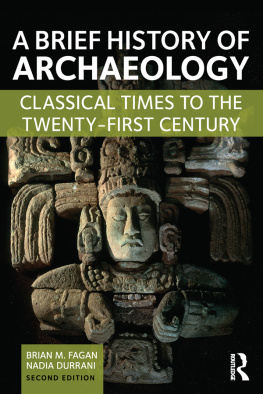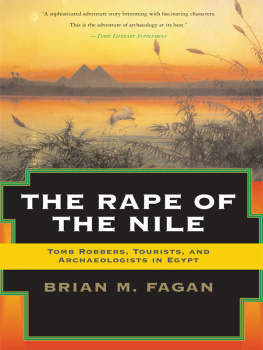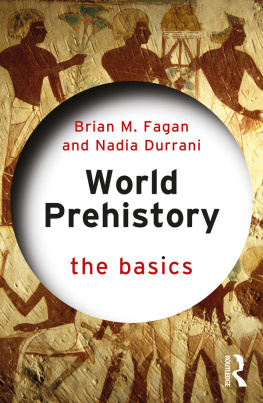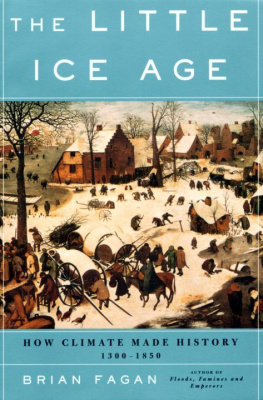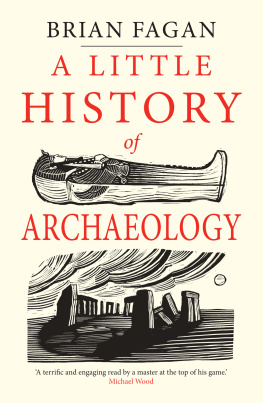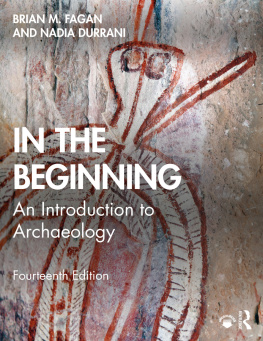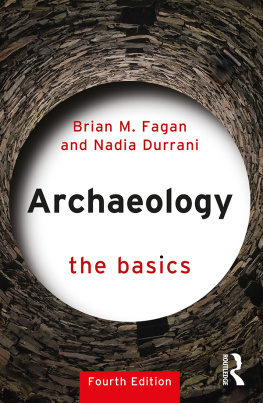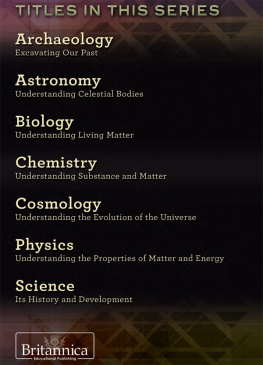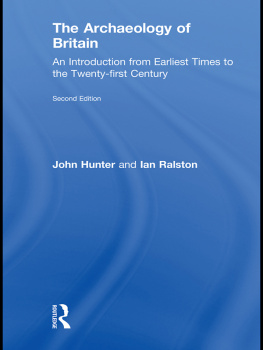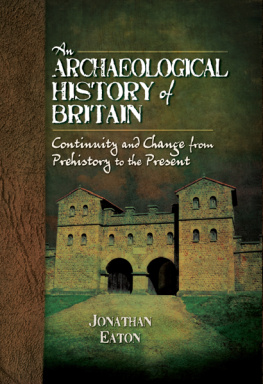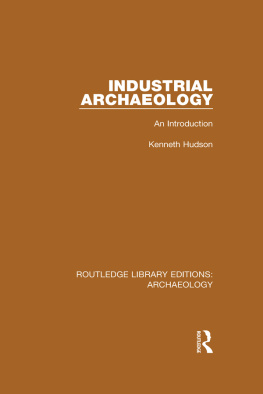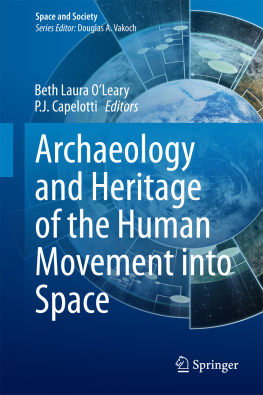A Brief History
of Archaeology
This short account of the discipline of archaeology tells of spectacular discoveries and the colorful lives of the archaeologists who made them, as well as of changing theories and current debates in the field. Spanning more than two thousand years of history, the book details early digs as well as covering the development of archaeology as a multidisciplinary science, the modernization of meticulous excavation methods during the twentieth century, and the important discoveries that led to new ideas about the evolution of human societies.
A Brief History of Archaeology is a vivid narrative that will engage readers who are new to the discipline, drawing on the authors extensive experience in the field and classroom. Early research at Stonehenge in Britain, burial mound excavations, and the exploration of Herculaneum and Pompeii culminate in the nineteenth-century debates over human antiquity and the theory of evolution. The book then moves on to the discovery of the worlds pre-industrial civilizations in Egypt, Mesopotamia, and Central America, the excavations at Troy and Mycenae, the Royal Burials at Ur, Iraq, and the dramatic finding of the pharaoh Tutankhamun in 1922. The book concludes by considering recent sensational discoveries, such as the Lords of Sipn in Peru, and exploring the debates over processual and postprocessual theory which have intrigued archaeologists in the early twenty-first century. The second edition updates this respected introduction to one of the sciences most fascinating disciplines.
Brian M. Fagan is one of the worlds leading archaeological writers and an internationally recognized authority on world prehistory. He is Emeritus Professor of Anthropology at the University of California, Santa Barbara.
Nadia Durrani is a Cambridge University-trained archaeologist and writer, with a Ph.D. from University College London in Arabian archaeology. She is former editor of Britains best-selling archaeology magazine, Current World Archaeology, and has authored and edited many articles and books on archaeology from every corner of the globe.
A Brief History
of Archaeology
Classical Times to
the Twenty-First Century
Second Edition
Brian M. Fagan and
Nadia Durrani

Second edition published 2016
by Routledge
2 Park Square, Milton Park, Abingdon, Oxon OX14 4RN
and by Routledge
711 Third Avenue, New York, NY 10017
Routledge is an imprint of the Taylor & Francis Group, an informa business
2016 Brian M. Fagan (as the Lindbriar Corporation) and Nadia Durrani
The right of Brian M. Fagan (as the Lindbriar Corporation) and Nadia Durrani to be identified as authors of this work has been asserted by them in accordance with sections 77 and 78 of the Copyright, Designs and Patents Act 1988.
All rights reserved. No part of this book may be reprinted or reproduced or utilized in any form or by any electronic, mechanical, or other means, now known or hereafter invented, including photocopying and recording, or in any information storage or retrieval system, without permission in writing from the publishers.
Trademark notice: Product or corporate names may be trademarks or registered trademarks, and are used only for identification and explanation without intent to infringe.
First edition published by Pearson 2005
British Library Cataloguing-in-Publication Data
A catalogue record for this book is available from the British Library
Library of Congress Cataloging-in-Publication Data
Names: Fagan, Brian M. | Durrani, Nadia.
Title: A brief history of archaeology : classical times to the twenty-first
century / Brian M. Fagan and Nadia Durrani.
Description: Second edition. | New York, NY : Routledge, 2016. |
Includes bibliographical references and index.
Identifiers: LCCN 2015046760| ISBN 9781138657076 (pbk. : alk.
paper) | ISBN 9781315621524 (ebk)
Subjects: LCSH: ArchaeologyHistory.
Classification: LCC CC100. F335 2016 | DDC 930.109dc23
LC record available at http://lccn.loc.gov/2015046760
ISBN: 978-1-138-65707-6 (pbk)
ISBN: 978-1-315-62152-4 (ebk)
Typeset in Palatino
by Keystroke, Station Road, Codsall, Wolverhampton
In Memoriam
Desmond and Betty Clark
Because of Livingstone and many other kindnesses
Contents
Lost civilizations, richly adorned royal burials, overgrown cities emerging miraculously from clinging rain forest: Archaeology has a long and romantic history of spectacular discovery. But there is much more to archaeologys history than the finding of palaces and ancient states. We would go so far as to say that you cannot understand todays archaeology without a thorough knowledge of its beginnings, and of the ideas that nurtured it.
Archaeologys achievements have been remarkable. Over the past century and a half, archaeologists have pushed back the story of human origins to a time more than 3 million years ago. They have traced the origins of modern humansourselvesto tropical Africa more than 150,000 years ago; chronicled the beginnings of agriculture; and reconstructed the minutest details of ancient life. The same 150 years have seen archaeology turn from an amateur pursuit into a sophisticated, multidisciplinary science in the hands of thousands of professional specialists. This history has unfolded against a background of changing intellectual and social environments: From the philosophical speculations of classical writers, and versions of human origins based on the Old Testament, to elaborate theories of multilinear evolution, cultural ecology, and the so-called postprocessual archaeology of the 1990s. This book is a brief introduction to the diverse strands of the history of archaeology, both intellectual and nonintellectual. Its a history that melds stories of compelling personalities and eminent archaeologists with accounts of spectacular and not-so-spectacular discoveries, and with ideas about the interpretation of our past.
A Brief History of Archaeology is a journey through the intriguing highways and byways of a discipline that has been a science for less than a century. Books like this are hard to write, because they combine people, discoveries, and ideas in ways that can easily become a confusing mlange of information. For this reason, we have chosen to write this book as a simple narrative, passing from archaeologists and their discoveries to changing ideas about the past in as seamless a way as possible.
ends with the work of Flinders Petrie along the Nile and that of Arthur Evans on the Palace of Knossos on Crete after 1900. Their researches ushered in a new era, which saw a new emphasis on artifacts, dating, and science.
, with the development of radiocarbon dating and increasingly pointed critiques of culture history. We also trace the beginnings of multidisciplinary research, and of salvage archaeology, and the development of world prehistory as a viable intellectual concept in the late 1950s.
takes a look at the developing archaeology of the future.
Guides to Further Reading at the end of each chapter provide sources for additional research. A Glossary of Archaeological Sites and Cultural Terms at the end of the book gives additional information on the more important sites mentioned in the text.
This book is not a history of archaeological theory, nor is it a history of archaeology by personality or discovery. Its an attempt to provide a balanced, and, we hope, entertaining account of the history of a relative newcomer to the world of science. As these pages will testify, the discovery of the prehistory of humankind ranks among the greatest scientific achievements of the nineteenth and twentieth centuries. The perspective is international, for we believe that archaeology is a global enterprise, not just a narrowly focused view of the past based on, say, North America, Europe, or the eastern Mediterranean.

